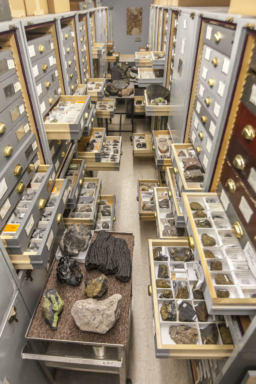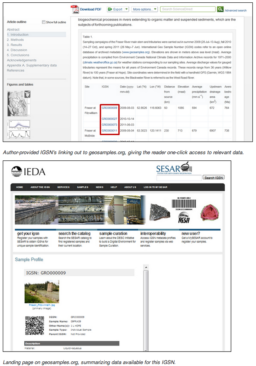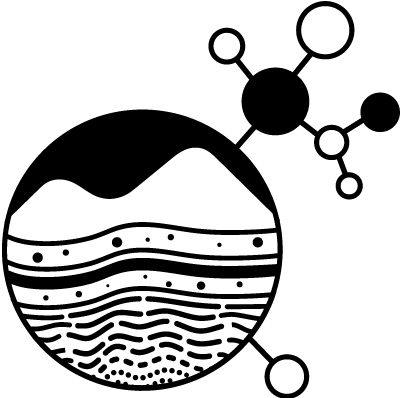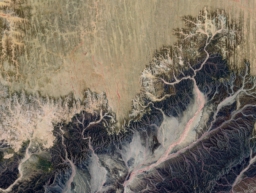New Role-Based Permissions in SESAR
March 2016
SESAR² Release 6.4 introduced substantial new functionality to support sample metadata access, editing, and registration permissions. The new features enable a SESAR² account owner to give varying levels of permission to others to view, edit, and/or register sample metadata on behalf of the account owner.
These new features were developed in response to user requests to share private metadata with select individuals and to share edit or registration permissions with, for example, a student that may help a SESAR² user manage their samples for a period of time. You can give these privileges to others for an indefinite or set period of time. You can change the level of permissions or remove permission entirely at any point.
There are four levels of permissions that you can give to others for your user codes:
- Read: Give permissions to others to view the metadata for all of your samples under a specific user code, regardless of whether the sample metadata are public or private.
- Read, Edit: In addition to privileges listed in #1, give permissions to others to edit the sample metadata profiles for your samples.
- Read, Edit, Create: In addition to privileges listed in #1 and #2, give permissions to others to register samples under your user code (namespace) through both individual and batch sample registration.
- Read, Edit, Create, Delete: In addition to privileges listed in #1, #2, and #3, give permissions to others to request de-activation of sample metadata profiles. Sample de-activation should be rare, except in the case of an error or a test or duplicate profile.
To share permissions for your user code(s), please be sure that the person you would like to give permissions to has registered for a GeoPass account. Then, please log into MySESAR and click “Set Permission for my User code” under My Account. You will need to know the GeoPass ID (email address) of the person you would like to share permissions with.
If you have questions or comments about the new capabilities or SESAR² in general, please contact info@54.224.199.193.
AGU Publications Recommends Use of IGSN
January 2016
In an EOS article published on Jan 7, 2016, Brooks Hanson, Director of AGU Publications, strongly encourages the use of the International GeoSample Number (IGSN) in journal papers. Hanson recognizes that including IGSNs in publications provides provenance information to readers, and more importantly links analyses of the same sample across the literature, ultimately fostering greater discovery.
The recommendations to use the IGSN to uniquely identify samples is part of a broader effort to incorporate open community identifiers, including ORCIDs (Open Researcher and Contributor ID) for authors and Fundref IDs for funders into publications. AGU Publications acknowledges that the use of these identifiers will simplify the manuscript submission and review process in the future. To read the full article, click here.
AGU Publications is just one of 36 signatories of the Statement of Commitment from Earth and Space Science Publishers and Data Facilities, which includes a commitment to, “promote the use of relevant community permanent identifiers for samples (IGSN), researchers (ORCID), and funders and grants (FundRef).”
Hanson, B. (2016), AGU opens its journals to author identifiers, Eos, 97, doi:10.1029/2016EO043183. Published on 7 January 2016.
Smithsonian Registers National Gem, Mineral, and Rock Collections with IGSNs in SESAR²
April 2015
The Smithsonian National Museum of Natural History recently registered nearly 350,000 samples with IGSNs in SESAR², including specimens from the National Gem, National Mineral, and National Rock Collections. The inclusion of these samples in SESAR² greatly enhances the discoverability of these valuable collections*. Furthermore, since data exists for many of these samples in PetDB, the IGSNs can now be added and used to link samples to analyses in different publications regardless of sample naming conventions of individual authors. Click here to view an example sample profile in SESAR², including a link to the Smithsonian Collections web pages. To view all samples, search the catalog for samples beginning with the user code (namespace) ‘NHB’.
These registrations took advantage of the SESAR² Web Services, which are documented here.

*Please note that the use of IGSNs in publications, alone, does not fulfill the Smithsonian loan policy stating that samples must be referenced by museum catalog numbers. Authors should include both museum catalog numbers and IGSNs.
SESAR² Registrations Triple in a Year
February 2015
The number of new samples registered in SESAR² over the last four months was more than triple that registered over the same period of time last year. In addition to an increase in registrations and batches submitted, there has also been an increase in the number of different namespaces (owned by individuals or institutions) being used to register samples.
From Oct. 2013 to Feb. 2014, 8,817 samples from 21 namespaces (user codes) were registered. Over that period of time, 33 batch registration templates were uploaded.
From Oct. 2014 to Feb. 2015, 29,084 samples (+230%) from 36 namespaces (user codes) (+70%) were registered. Over that period of time, 96 batch registration templates (+190%) were uploaded.
The increases seen in SESAR² registrations show that more researchers and organizations are finding SESAR² and the IGSN to be useful tools for managing their physical samples and the metadata pertaining to them, as well as for making their physical samples discoverable in the global SESAR² sample catalog. To learn more about the benefits of SESAR² and the IGSN and how to start registering your physical samples, please visit our Resources or Registration pages, or see our tutorials.
Recent Change to New SESAR² Namespaces (User Codes)
July 2014
IGSNs are going to change syntax from a 3 digit namespace to a 5 digit namespace (user code), starting with IE (For IEDA, Integrated Earth Data Applications, the facility that oversees SESAR²). This change will accommodate the expansion of IGSN, through the IGSN e.V., to more allocating agents around the world.
A new user will still choose a 3-digit alphanumeric namespace (user code), for example ABC, and their IGSNs will be of the form: IEABC0001, where the first 5 digits are the full namespace and the last 4 digits are alphanumeric. This will give users 36^4 possible IGSNs, or over 1.5 million IGSNs.
This change will not affect existing IGSNs or namespaces (user codes), but will change all namespaces (user codes) and IGSNs allocated by SESAR² in the future.
If you are interested in becoming part of the SESAR² power users group, with access to new features in development, reply to info@54.224.199.193.
Link your paper with IGSN and make your data more accessible and discoverable
April 2014
Online papers in Science Direct link directly to sample metadata profiles in SESAR², making all of the metadata about the sample quickly available. When submitting a paper to Elsevier, tables with column headers “IGSN” or text with the prefix “IGSN:” will be identified and linked directly to geosamples.org. For more information please see the International Geo Sample Number section in Elsevier’s Guide for Authors.
See examples:
- Beier et al., 2018, Lithos (Table 1)
- Dere et al., 2013, Geochimica et Cosmochimica Acta (Table 2)
From the Elsevier news item:
We are delighted to highlight the ongoing cooperation with IEDA by announcing the first published papers with linked International Geo Sample Numbers (IGSN). Take a look at Table 2 of this Geochimica et Cosmochimica Acta paper where you can click on specific IGSN numbers and be taken directly to the sample profile held in the SESAR² sample metadata catalog at geosamples.org. By setting up links between databases and published papers, data is more accessible and discoverable, which benefits all researchers in the field.

DESC webinar video, presentations, and Q&A
June 2013
Thanks to everyone who participated in the DESC (Digital Environment for Sample Curation) Webinar. The materials are posted on this page.
Presentations
- Introduction to DESC, Digital Environment for Sample Curation (Kerstin Lehnert)
- Cyberinfrastructure Needs of the U.S. Core and Sample Repositories (Anthony Koppers)
- State Geological Surveys: Capabilities and Needs (Lee Allison)
- Development Considerations for DESC (Jeff Heard and Mary Whitton, RENCI)
Video
Discussion
- From Sarah Timm (Virginia Museum of Natural History)
- Q: I developed a program called EGEMS specifically for cataloging geological materials including but not limited to rocks, minerals, research products, etc and I am wondering if there is any room for collaboration. I agree with everything you have said about the importance of preserving our collections and increasing their accessibility and I spent my master’s thesis at Virginia Tech researching and developing a potential solution to this growing need. This was shortly before EarthCube was developed and the only programs for recording data for geological materials were very expensive and designed for large museums. I have given talks at GSA these past few years and have touched on almost all of the topics you have in this talk. I would very much like to be a larger part of this initiative, can you tell me if and how this might be possible? Thank you.
Information about EGEMS and screenshots of the program can be viewed at www.egemsinfo.com - A: Yes, please contact us at info@54.224.199.193 if you would like to take on a collaborative role. Another great way to participate is to fill out the DESC survey about data management and sample curation challenges.
- Q: I developed a program called EGEMS specifically for cataloging geological materials including but not limited to rocks, minerals, research products, etc and I am wondering if there is any room for collaboration. I agree with everything you have said about the importance of preserving our collections and increasing their accessibility and I spent my master’s thesis at Virginia Tech researching and developing a potential solution to this growing need. This was shortly before EarthCube was developed and the only programs for recording data for geological materials were very expensive and designed for large museums. I have given talks at GSA these past few years and have touched on almost all of the topics you have in this talk. I would very much like to be a larger part of this initiative, can you tell me if and how this might be possible? Thank you.
- From Ramona Walls (University of Arizona)
- Q: I am involved in an effort to develop an ontology for biological collections (http://code.google.com/p/bco/). One goal is to allow linking of data that is annotated with existing standards such as Darwin Core or MIxS. This is going hand in hand with other efforts, for example, to develop standard identifiers for biological specimens. The motivations were almost identical to what you have described for earth science collections during the first two talks. Many of the ontology design patterns we are developing for describing biological samples could be translated directly into earth science samples. It would be great to coordinate the efforts across our communities. Anyone who would like to contact us can use the mailing list at https://groups.google.com/forum/?fromgroups#!forum/bco-discuss.
Survey
- DESC Repository Survey: We need your help in gathering requirements for DESC. Please, tell us about your data management and sample curation challenges.
Mailing list
- Sign up for the community mailing list for DESC, SESAR², and IGSN
Please send any questions or comments to info@54.224.199.193.
New linking to the Index to Marine & Lacustrine Geological Samples (IMLGS)
May 2013
SESAR² is working with sample repositories to improve linking between existing sample information. The IMLGS (Index to Marine & Lacustrine Geological Samples) has provided links to their records for over 35,000 SESAR² sample profiles for several sample repositories. The links appear at the bottom of the sample profiles.
Sample repositories with this improved linking include:
- The Antarctic Marine Geology Research Facility (example)
- The Lamont Doherty Core Repository (example)
- The Ocean Drilling Program (example)
- The University of Rhode Island Marine Geological Samples Laboratory (example)
- The Woods Hole Oceanographic Institution (example)
Any user can add relevant URL links to their own profiles by choosing the “edit” link in MySESAR. For bulk updates please contact info@54.224.199.193.
Q & A from the 2013-03-27 IGSN Webinar
The following questions were submitted by participants during the Introduction to the IGSN Webinar on March 27, 2013.
March 2013
Q: will you be posting these slides (and webinar recording) to the EarthCube site? It'd be a great resource.
A: Yes, we plan to post the slides and recording, at our Zenodo.
Q: Can anyone define a user name space?
A: Yes, anyone who signs up for a GeoPass account and then logs in to SESAR² is able to define a 3-character/digit name space.
Q: Once I have set up a name space, can collaborators working on the same project use the same name space?
A: We have some examples where that happens now, they use a shared log-in username.
Q: Can an IGSN be assigned to a thin section?
A: Yes, and it has been done!
Q: 1) Can mineral separates be linked to rocks from which they were obtained by IGSN? 2) Would a sample powder have the same IGSN as the whole rocks from which it was derived?
A: Yes, they can be linked. And there would be two IGSNs, one for the powder and one for the rock (parent sample). Publications should use the parent IGSN.
Q: Will temporal searches be possible?
A: Search by geological age will be possible, currently there is not that information entered for all samples, so search results will be incomplete.
Q: We can keep our data private up until some point where we decide to make it public, right?
A: You can control the visibility and searchability of your sample metadata by setting sample metadata release dates. SESAR² strongly recommends that sample metadata become available immediately upon sample registration or within two years of registration.
Q: WIll it detect duplicate IGSN numbers automatically if we enter the number ourselves?
A: Yes, the system will check for existing IGSNs and will not allow a duplicate IGSN.
Q: If I had, say, stable isotope data associated with my samples or lithologic info, I'm assuming I would have to upload these data, connected to the IGSN, on some other site, right?
A: Yes, analytical data will go into databases for analytical data. It could technically be added, but that is not the main use of SESAR², which primarily is a sample registry that links to many other sources.
Q: Is lat/long, decimal degrees the only location format you'll accept, or is UTM acceptable?
A: SESAR² now accepts UTM coordinates, which must be accompanied by UTM zone. SESAR²'s geospatial search is driven solely by latitude and longitude, so samples that do not have latitude and longitude will not be discoverable in a geospatial search of SESAR² regardless of whether UTM coordinates have been entered. There are a number of online tools available to convert UTM to latitude and longitude (WGS84 geodetic datum is expected in SESAR²).
However, SESAR²’s geospatial search is driven solely by latitude and longitude so if only the UTM coordinate system is used, the samples will not be discoverable in the geospatial search. There are a number of online tools available to convert UTM to WGS84.
Q: Do I have to register all my samples before using it in publications so that I can create that link.
A: Yes! It should show up in the registry before it is used in publications.
Q: IGSN serve as a database to keep digital information of samples, right?
A: Correct, it is a registry of samples, with associated metadata (description, files, links)
Q: How many samples are required for registration at IGSN?
A: You can start with just one sample! You can log in and look around without any samples.
Q: Does the IGSN also produce the unique QR code that we can use in our own systems with, and independant of, the IGSN database
A: Yes, the QR code resolves to the URL of the metadata profile.
Q: Would personal initials be good for a name space? Or institutional initials?
A: Depending on your specific case, either of those options would be fine.
Q: Can you search by rock formation name?
A: Not yet. There is a metadata field for Geological Unit, but it is not popularly used.
Q: If you pre-register more IGSNs than you end up collecting, what happens to the empty IGSNs?
A: You should contact us in this situation for a case by case evaluation! It is possible they can be used in the future.
Q: Will you be reaching out to non-Elsevier journals?
A: Yes, absolutely. We started with Elsevier because they had the capability to link to our database. We definitely plan to expand more broadly. If you are an editor, please promote the IGSN!
Q: Do you anticipate assigning IGSNs in the field or only in the lab?
A: Both the field and the lab are appropriate for assigning IGSNs.
Q: Can a sample ever be deleted from SESAR²?
A: It should not. Once an IGSN is issued, it should not go away. There is the functionality to request deletion of a sample (if it was a test, or a mistake), this is handled on a case-by-case basis.
Q: How do you physically attach the QR codes and SESAR² number to rock samples?
A: You could put the sample label on the bag. The IGSN itself is purposely short so that it will fit on a sample. From a participant: We've epoxyed our IGSN labels to our samples.
Featured sample collections: The Marine Geoscience Data System (MGDS) sample metadata
November 2012
Sample metadata from the Marine Geoscience Data System (MGDS) have been migrated into SESAR² as part of the consolidation of sample cataloging within the Integrated Earth Data Applications (IEDA) facility. MGDS provides access to data portals for the NSF-supported Ridge 2000 and MARGINS, and GeoPRISMS programs, the Antarctic and Southern Ocean Data Synthesis, and the Academic Seismic Portal. There are over 14,000 sample metadata profiles registered with IGSNs under the user code (namespace) MGD.
Use the SESAR² Catalog Search Advanced Search options to find metadata profiles of specific cruises, platforms or collectors.
Investigators that own the physical samples in the MGD collection are encouraged to register an account with SESAR², which will enable them to organize their samples under their own workspace, edit metadata profiles, and directly register additional sample metadata. Please contact us at info@54.224.199.193 if you would like to transfer your sample metadata from the MGDS ownership into your own account.


